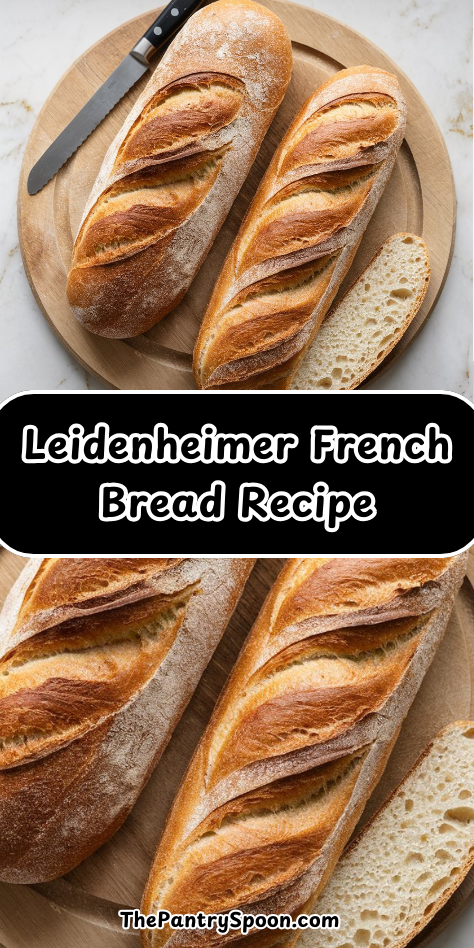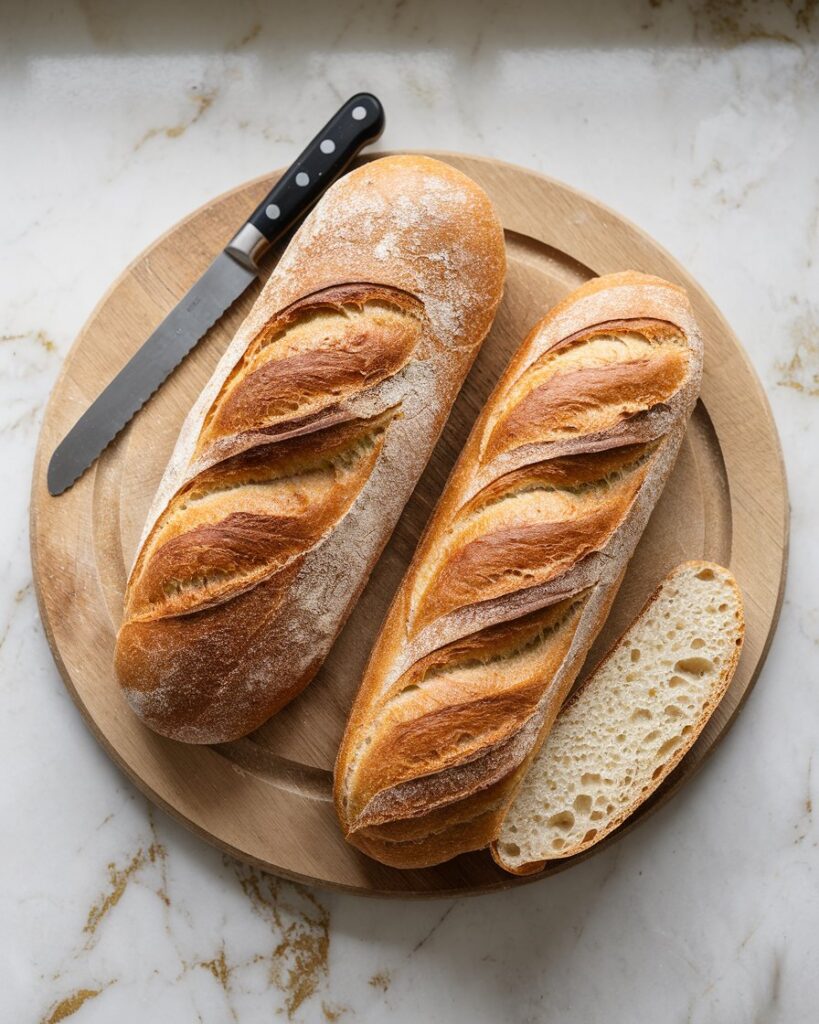Leidenheimer French bread is more than just bread—it’s a New Orleans institution. Light, airy, and with a crisp crust that shatters at the touch, it’s the essential base for po’ boy sandwiches and many other Southern favorites.
This homemade version lets you recreate that bakery-fresh texture and flavor without the trip to Louisiana. With the right technique and ingredients, you can bake loaves that are perfect for both everyday meals and special occasions.
Why You’ll Love This Recipe
This bread strikes the perfect balance between a thin, crispy crust and a light, fluffy crumb inside. It’s sturdy enough to hold fillings but tender enough to tear apart easily.
Because it’s so versatile, you can enjoy it with butter, use it for sandwiches, or serve it alongside soups and stews. The homemade version also allows you to enjoy that fresh-from-the-oven aroma that’s impossible to resist.
What You’ll Need
- 4 cups bread flour (plus more for dusting)
- 1½ cups warm water (110°F)
- 2¼ teaspoons active dry yeast (1 packet)
- 2 teaspoons sugar
- 2 teaspoons salt
- 1 tablespoon vegetable oil
- Cornmeal for dusting baking sheet
Pro Tips
- Use bread flour for the best gluten development and chewy texture.
- Steam is key—placing a pan of water in the oven helps create that signature crisp crust.
- Don’t skip the second rise; it’s essential for developing flavor and structure.
- Slash the tops before baking for the traditional look and even expansion.
- Cool completely before slicing to avoid squishing the soft interior.
Tools You’ll Need
- Large mixing bowl
- Measuring cups and spoons
- Stand mixer with dough hook (optional)
- Baking sheet
- Sharp knife or bread lame
- Kitchen towel or plastic wrap
Substitutions & Variations
- Flour: All-purpose flour works, though texture will be slightly less chewy.
- Shape: Make smaller rolls for individual po’ boys or dinner rolls.
- Toppings: Brush with melted butter after baking for a softer crust.
- Whole wheat: Replace up to 25% of the flour with whole wheat for a heartier loaf.
- Herbs: Add dried rosemary or thyme to the dough for extra flavor.
Make-Ahead Tips
You can prepare the dough up to the first rise, then refrigerate overnight. Let it come to room temperature before shaping and baking.
Baked loaves can be frozen for up to 2 months. Wrap tightly in foil and store in a freezer-safe bag.
Step-by-Step Instructions
1. Activate the Yeast
In a large mixing bowl, combine warm water, sugar, and yeast. Let sit for 5–10 minutes until foamy.
2. Add Flour and Salt
Stir in bread flour and salt until a shaggy dough forms. Add vegetable oil and mix until incorporated.
3. Knead the Dough
Turn out onto a floured surface and knead for 8–10 minutes until smooth and elastic, or knead in a stand mixer for 6–7 minutes.
4. First Rise
Place dough in a lightly oiled bowl, cover with a towel, and let rise in a warm spot for 1–1½ hours until doubled in size.
5. Shape the Loaves
Punch down the dough and divide into two equal pieces. Shape each into a long loaf, about 16 inches in length.
6. Second Rise
Place loaves on a cornmeal-dusted baking sheet. Cover and let rise for another 30–40 minutes until puffy.
7. Prepare for Baking
Preheat oven to 375°F. Use a sharp knife to slash each loaf diagonally 3–4 times. Place a pan of water on the lower rack for steam.
8. Bake
Bake for 20–25 minutes until golden brown and crusty. Rotate the pan halfway through baking for even browning.
9. Cool and Serve
Remove loaves from the oven and cool completely on a wire rack before slicing.
Leftovers & Storage
Store bread at room temperature in a paper bag for up to 2 days to maintain the crust. For longer storage, freeze as soon as cooled.
To re-crisp the crust, warm in a 350°F oven for 5–7 minutes before serving.
Nutrition & Benefits
While Leidenheimer French bread is a treat, making it at home means you avoid preservatives and can control the ingredients. Bread flour provides protein for a strong structure, while the minimal fat keeps it light.
It’s a versatile base for countless dishes, from classic po’ boys to garlic bread, making it a kitchen staple worth mastering.
Recipe FAQs
1. Can I use instant yeast instead of active dry yeast?
Yes, you can add it directly to the flour without proofing first.
2. How do I get the crust extra crispy?
Bake with steam and allow the bread to cool completely before slicing.
3. Can I make this bread in a bread machine?
You can mix and knead in the bread machine, then shape and bake in the oven.
4. What makes this different from baguette bread?
Leidenheimer bread has a lighter, airier crumb and a thinner crust than traditional baguettes.
5. Can I double the recipe?
Yes, just make sure your baking sheets can accommodate the extra loaves.
The Taste of New Orleans in Your Kitchen
Leidenheimer French bread is the foundation of some of New Orleans’ most beloved dishes, and now you can bake it in your own oven. With its airy interior and crisp crust, it’s the perfect partner for sandwiches, soups, and more.
Once you make it yourself, you’ll understand why it’s been a Louisiana favorite for over a century. This is a bread that turns any meal into something special.





